-
 Bitcoin
Bitcoin $107,461.2530
0.65% -
 Ethereum
Ethereum $2,425.6945
-0.64% -
 Tether USDt
Tether USDt $1.0003
-0.01% -
 XRP
XRP $2.1844
4.49% -
 BNB
BNB $646.3777
0.36% -
 Solana
Solana $146.6972
3.90% -
 USDC
USDC $1.0000
0.00% -
 TRON
TRON $0.2744
1.17% -
 Dogecoin
Dogecoin $0.1631
1.28% -
 Cardano
Cardano $0.5609
1.22% -
 Hyperliquid
Hyperliquid $37.0726
2.08% -
 Bitcoin Cash
Bitcoin Cash $497.3222
-0.12% -
 Sui
Sui $2.7220
3.19% -
 Chainlink
Chainlink $13.1487
0.79% -
 UNUS SED LEO
UNUS SED LEO $9.0787
0.68% -
 Avalanche
Avalanche $17.6542
1.11% -
 Stellar
Stellar $0.2377
1.49% -
 Toncoin
Toncoin $2.8426
0.81% -
 Shiba Inu
Shiba Inu $0.0...01140
1.72% -
 Litecoin
Litecoin $85.2565
0.62% -
 Hedera
Hedera $0.1475
2.69% -
 Monero
Monero $314.1893
2.28% -
 Bitget Token
Bitget Token $4.6752
0.90% -
 Dai
Dai $1.0001
0.02% -
 Polkadot
Polkadot $3.3425
1.28% -
 Ethena USDe
Ethena USDe $1.0001
0.02% -
 Uniswap
Uniswap $6.9500
1.23% -
 Pi
Pi $0.5304
-3.13% -
 Pepe
Pepe $0.0...09311
0.91% -
 Aave
Aave $254.6674
-1.33%
How to compare different digital currency exchanges? What indicators to look at?
When choosing a digital currency exchange, consider security, fees, user interface, customer support, available cryptocurrencies, liquidity, regulatory compliance, and additional features.
May 12, 2025 at 04:49 pm
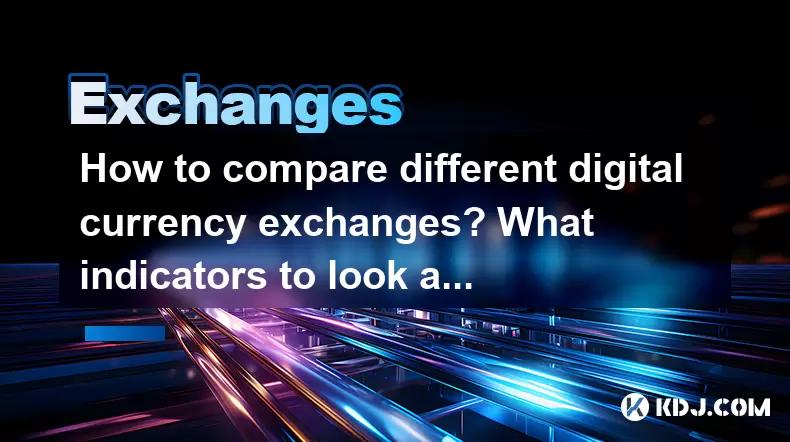
Comparing different digital currency exchanges is crucial for any cryptocurrency enthusiast looking to optimize their trading experience. When evaluating these platforms, several key indicators must be considered to ensure you choose the one that best fits your needs. This article will guide you through the process of comparing digital currency exchanges by focusing on essential indicators such as security, fees, user interface, customer support, and available cryptocurrencies.
Security
Security is paramount when dealing with digital currencies, as the decentralized nature of cryptocurrencies makes them a prime target for hackers. When comparing exchanges, look for those that offer robust security measures. These include two-factor authentication (2FA), cold storage of funds, and regular security audits. Additionally, check if the exchange has ever been hacked in the past and how they responded to the incident. A good exchange will have a clear policy on how they protect user funds and data.
Fees
Fees can significantly impact your trading profitability. Exchanges typically charge fees for trading, deposits, and withdrawals. When comparing fees, look at the fee structure for different types of transactions. Some exchanges offer lower fees for high-volume traders or for using their native cryptocurrency. It's essential to calculate the total cost of trading on each exchange to determine which one offers the best value for your trading style.
User Interface
The user interface of an exchange can greatly affect your trading experience. A well-designed interface should be intuitive and easy to navigate, allowing you to execute trades quickly and efficiently. When comparing exchanges, try out their demo accounts or read user reviews to get a sense of how user-friendly the platform is. Look for features like real-time charts, order books, and customizable dashboards that can enhance your trading experience.
Customer Support
Customer support is another critical factor to consider. Trading on a digital currency exchange can sometimes lead to issues, such as delayed transactions or account problems. A good exchange will offer responsive customer support through multiple channels, such as email, live chat, and phone. When comparing exchanges, check their response times and the quality of their support. Look for exchanges that provide 24/7 support and have a comprehensive FAQ section to help you resolve common issues quickly.
Available Cryptocurrencies
The available cryptocurrencies on an exchange can determine whether it meets your trading needs. Some exchanges offer a wide range of cryptocurrencies, while others focus on a smaller selection. When comparing exchanges, consider the cryptocurrencies you want to trade and ensure the exchange supports them. Additionally, check if the exchange offers trading pairs that align with your trading strategy. Some exchanges may offer unique trading pairs that can provide additional trading opportunities.
Liquidity
Liquidity is another important indicator to consider when comparing digital currency exchanges. High liquidity means that there are enough buyers and sellers on the platform to ensure that you can execute your trades quickly and at the desired price. Low liquidity can result in slippage, where the price you pay or receive is different from what you expected. To assess liquidity, look at the trading volume and order book depth of the exchange. High trading volumes and deep order books are indicators of good liquidity.
Regulatory Compliance
Regulatory compliance is crucial for the safety and legitimacy of your trading activities. Different countries have different regulations regarding digital currency exchanges, and it's important to choose an exchange that complies with the laws of your jurisdiction. When comparing exchanges, check if they are registered with financial authorities and if they follow anti-money laundering (AML) and know your customer (KYC) regulations. A compliant exchange will provide a safer trading environment and protect you from legal issues.
Additional Features
Some exchanges offer additional features that can enhance your trading experience. These may include margin trading, futures trading, staking, and lending services. When comparing exchanges, consider whether these features align with your trading goals. For example, if you're interested in earning passive income, look for exchanges that offer staking or lending services. If you're a more advanced trader, you may prefer exchanges that offer margin or futures trading.
How to Compare Digital Currency Exchanges: A Step-by-Step Guide
- Research: Start by researching the exchanges you're interested in. Look at their websites, read user reviews, and gather information on their security measures, fees, and available cryptocurrencies.
- Create Demo Accounts: Many exchanges offer demo accounts that allow you to try out their platform without risking real money. Use these accounts to get a feel for the user interface and trading features.
- Compare Fees: Calculate the total fees you would pay on each exchange for your typical trading activities. Consider trading fees, deposit fees, and withdrawal fees.
- Evaluate Security: Check the security measures each exchange has in place. Look for two-factor authentication, cold storage, and regular security audits. Also, research any past security incidents and how the exchange responded.
- Assess Customer Support: Test the customer support of each exchange by reaching out with a question or concern. Evaluate their response time and the quality of their support.
- Check Liquidity: Look at the trading volume and order book depth of each exchange to assess their liquidity. High liquidity is important for executing trades quickly and at the desired price.
- Verify Regulatory Compliance: Ensure that the exchanges you're considering comply with the regulations in your jurisdiction. Check if they are registered with financial authorities and follow AML and KYC regulations.
- Review Additional Features: Consider any additional features offered by the exchanges, such as margin trading, futures trading, staking, and lending services. Determine if these features align with your trading goals.
Frequently Asked Questions
Q: How often should I reevaluate my choice of digital currency exchange?
A: It's a good practice to reevaluate your choice of digital currency exchange at least once a year or whenever there are significant changes in the market or in the exchange's policies. Regularly reviewing your options ensures that you're using the best platform for your needs.
Q: Are there any tools or resources that can help me compare digital currency exchanges?
A: Yes, there are several tools and resources available to help you compare digital currency exchanges. Websites like CoinMarketCap and CryptoCompare provide detailed information on various exchanges, including their fees, security measures, and available cryptocurrencies. Additionally, online forums and social media groups can offer valuable insights from other traders.
Q: Can I use multiple digital currency exchanges simultaneously?
A: Yes, many traders use multiple digital currency exchanges simultaneously to take advantage of different features and trading pairs. However, managing multiple accounts can be more complex, so it's important to keep track of your activities on each platform and ensure you're complying with the terms of service of each exchange.
Q: How important is the reputation of a digital currency exchange when making a comparison?
A: The reputation of a digital currency exchange is very important when making a comparison. A reputable exchange is more likely to have robust security measures, reliable customer support, and a user-friendly interface. You can assess an exchange's reputation by reading user reviews, checking their history of security incidents, and looking at their regulatory compliance.
Disclaimer:info@kdj.com
The information provided is not trading advice. kdj.com does not assume any responsibility for any investments made based on the information provided in this article. Cryptocurrencies are highly volatile and it is highly recommended that you invest with caution after thorough research!
If you believe that the content used on this website infringes your copyright, please contact us immediately (info@kdj.com) and we will delete it promptly.
- Undervalued Crypto Gems: Time to Buy Now?
- 2025-06-28 14:30:12
- Stablecoins, Risk Reward, and Regulation: Navigating the Crypto Minefield
- 2025-06-28 14:30:12
- Binance Coin (BNB): Whale Moves, Exchange Activity, and the Path to $900?
- 2025-06-28 14:50:13
- XRP Lawsuit: SEC Appeal Looms, Lawyer Warns – Is It Really Over?
- 2025-06-28 15:10:16
- Bitcoin's Long-Term Holders: An Accumulation Signal You Can't Ignore
- 2025-06-28 15:30:12
- Bitcoin, Elections, and Voters: A New Political Force?
- 2025-06-28 15:30:12
Related knowledge
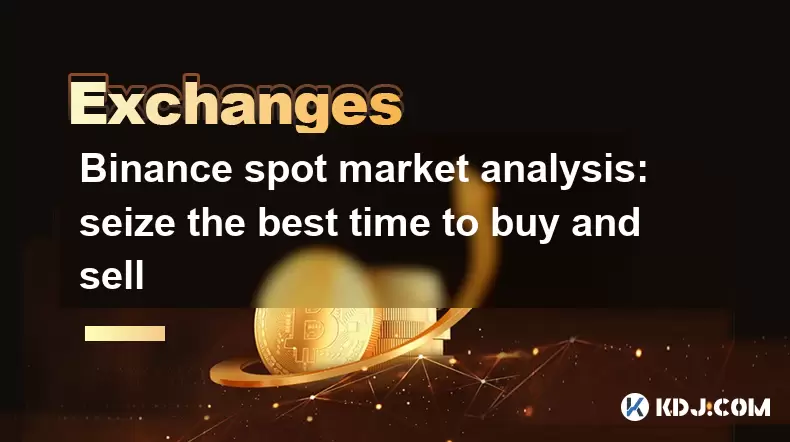
Binance spot market analysis: seize the best time to buy and sell
Jun 19,2025 at 04:56pm
Understanding the Binance Spot MarketThe Binance spot market is one of the most popular platforms for cryptocurrency trading globally. It allows users to trade digital assets at current market prices, making it essential for traders aiming to buy low and sell high. Unlike futures or margin trading, spot trading involves direct ownership of the asset aft...
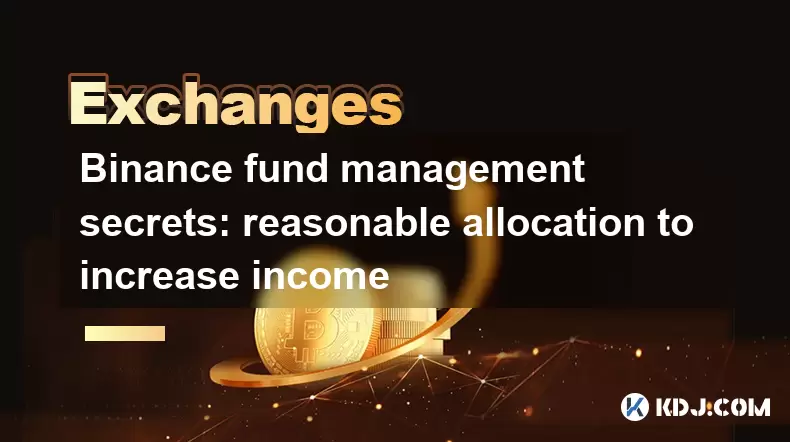
Binance fund management secrets: reasonable allocation to increase income
Jun 22,2025 at 02:29pm
Understanding Binance Fund ManagementBinance fund management involves strategic allocation of your cryptocurrency assets to optimize returns while managing risk. The key to successful fund management lies in understanding how different investment options on the Binance platform can be utilized to create a diversified portfolio. This includes spot tradin...
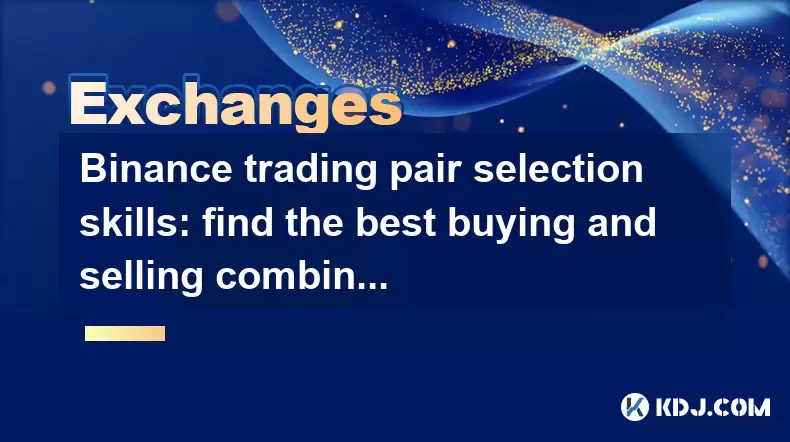
Binance trading pair selection skills: find the best buying and selling combination
Jun 23,2025 at 02:49am
Understanding the Basics of Trading Pairs on BinanceBefore diving into trading pair selection skills, it's essential to understand what a trading pair is. On Binance, a trading pair refers to two cryptocurrencies that can be traded against each other. For example, BTC/USDT means Bitcoin is being traded against Tether. Each trading pair has its own liqui...
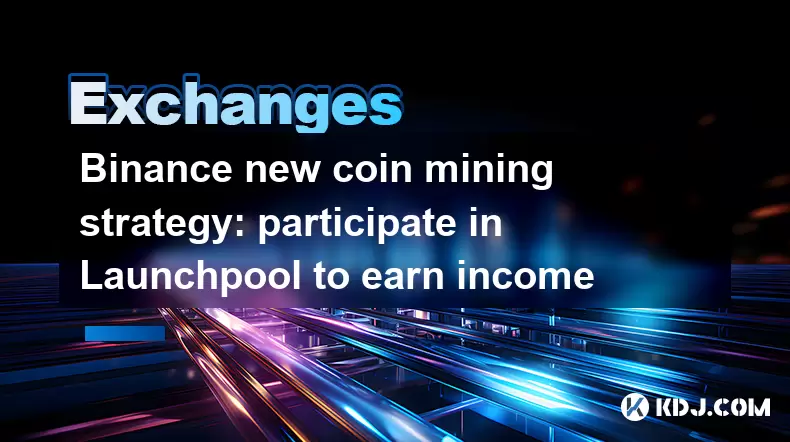
Binance new coin mining strategy: participate in Launchpool to earn income
Jun 23,2025 at 11:56am
What is Binance Launchpool and how does it work?Binance Launchpool is a feature introduced by the world’s largest cryptocurrency exchange, Binance, to allow users to earn new tokens through staking. This platform enables users to stake their existing cryptocurrencies (such as BNB, BUSD, or other supported assets) in exchange for newly launched tokens. T...
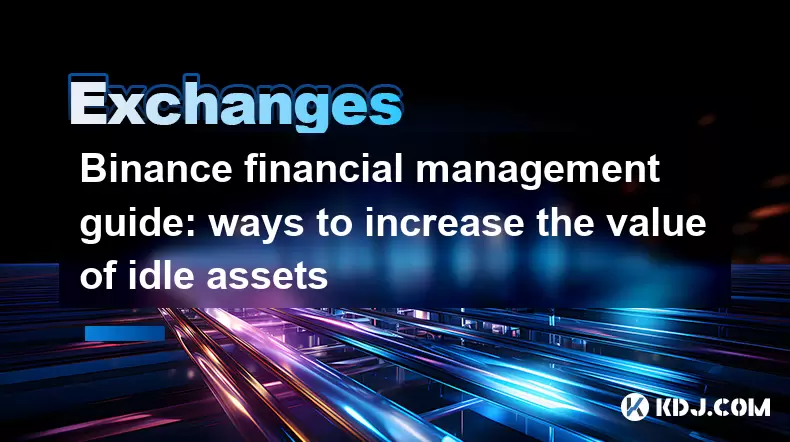
Binance financial management guide: ways to increase the value of idle assets
Jun 19,2025 at 11:22pm
Understanding Idle Assets in the Cryptocurrency SpaceIn the fast-paced world of cryptocurrency, idle assets refer to digital currencies that are not actively being used for trading, staking, or yield farming. Holding these funds in a wallet without utilizing them means missing out on potential growth opportunities. Binance, as one of the leading platfor...
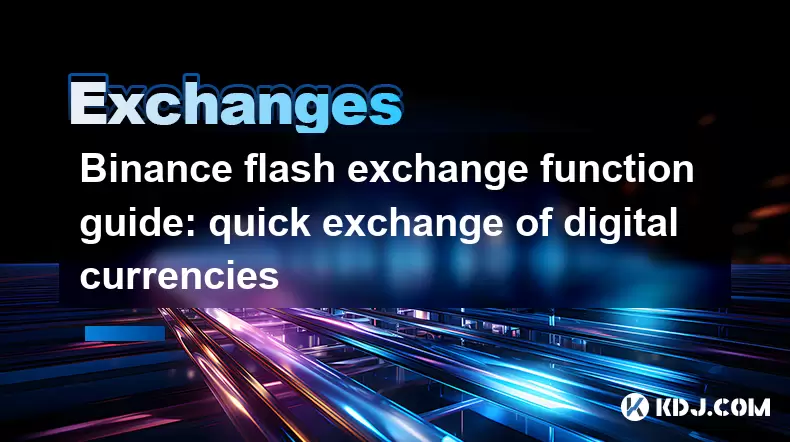
Binance flash exchange function guide: quick exchange of digital currencies
Jun 23,2025 at 12:29pm
What is the Binance Flash Exchange Function?The Binance Flash Exchange function is a powerful tool designed to allow users to instantly swap between supported cryptocurrencies without the need for placing traditional buy/sell orders. This feature simplifies the trading process by offering a direct exchange mechanism, eliminating the requirement to conve...

Binance spot market analysis: seize the best time to buy and sell
Jun 19,2025 at 04:56pm
Understanding the Binance Spot MarketThe Binance spot market is one of the most popular platforms for cryptocurrency trading globally. It allows users to trade digital assets at current market prices, making it essential for traders aiming to buy low and sell high. Unlike futures or margin trading, spot trading involves direct ownership of the asset aft...

Binance fund management secrets: reasonable allocation to increase income
Jun 22,2025 at 02:29pm
Understanding Binance Fund ManagementBinance fund management involves strategic allocation of your cryptocurrency assets to optimize returns while managing risk. The key to successful fund management lies in understanding how different investment options on the Binance platform can be utilized to create a diversified portfolio. This includes spot tradin...

Binance trading pair selection skills: find the best buying and selling combination
Jun 23,2025 at 02:49am
Understanding the Basics of Trading Pairs on BinanceBefore diving into trading pair selection skills, it's essential to understand what a trading pair is. On Binance, a trading pair refers to two cryptocurrencies that can be traded against each other. For example, BTC/USDT means Bitcoin is being traded against Tether. Each trading pair has its own liqui...

Binance new coin mining strategy: participate in Launchpool to earn income
Jun 23,2025 at 11:56am
What is Binance Launchpool and how does it work?Binance Launchpool is a feature introduced by the world’s largest cryptocurrency exchange, Binance, to allow users to earn new tokens through staking. This platform enables users to stake their existing cryptocurrencies (such as BNB, BUSD, or other supported assets) in exchange for newly launched tokens. T...

Binance financial management guide: ways to increase the value of idle assets
Jun 19,2025 at 11:22pm
Understanding Idle Assets in the Cryptocurrency SpaceIn the fast-paced world of cryptocurrency, idle assets refer to digital currencies that are not actively being used for trading, staking, or yield farming. Holding these funds in a wallet without utilizing them means missing out on potential growth opportunities. Binance, as one of the leading platfor...

Binance flash exchange function guide: quick exchange of digital currencies
Jun 23,2025 at 12:29pm
What is the Binance Flash Exchange Function?The Binance Flash Exchange function is a powerful tool designed to allow users to instantly swap between supported cryptocurrencies without the need for placing traditional buy/sell orders. This feature simplifies the trading process by offering a direct exchange mechanism, eliminating the requirement to conve...
See all articles
























































































